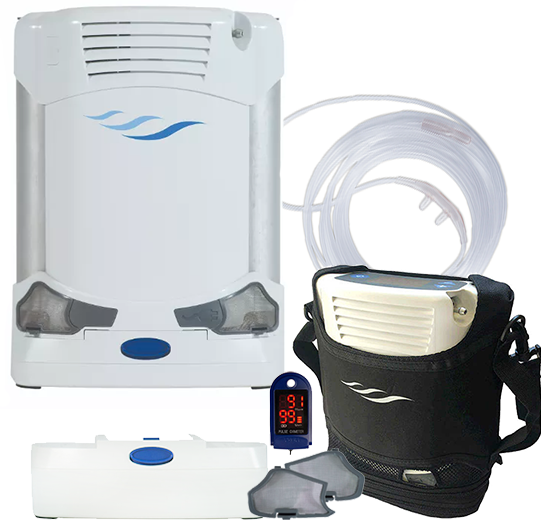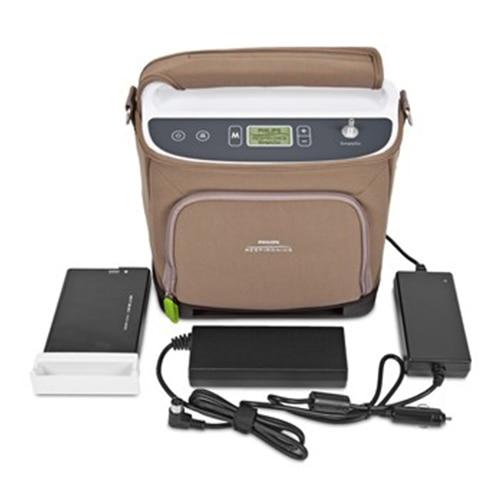5 Simple Techniques For Portable Oxygen Concentrators
Wiki Article
What Does Portable Oxygen Concentrators Do?
Table of ContentsThe Greatest Guide To Portable Oxygen ConcentratorsThe Of Portable Oxygen ConcentratorsNot known Facts About Portable Oxygen ConcentratorsGetting The Portable Oxygen Concentrators To Work
Stationary oxygen concentrators were once the requirement, but these storage tanks might evaluate 50 pounds and were extremely difficult (Portable Oxygen Concentrators). Currently, mobile oxygen concentrators obtain the job done, and they can suit a purse or handbag! The only point you must bear in mind is that portable concentrators have a lot more minimal oxygen distribution capacitiesThere are 2 primary kinds of portable oxygen concentrators: pulse dose and constant flow. As the name suggests, pulse dose concentrators provide oxygen periodically, just turning on when you breathe in. This kind of gadget is usually recommended for COPD people with limited oxygen demands, as the quantity of O2 that a pulse dose concentrator can deliver is reasonably low.
This tool can supply up to 3,000 m, L of oxygen every min, while pulse dose tools tend to cover out at 1250 m, L. Constant flow tools are the go-to for most COPD people, as they're perfect for people who need 2 to 5 liters of oxygen a min.
Since you have this overview to the different sorts of mobile oxygen devices, select the most effective tool with the aid of your doctor. You can discover our blogs for more information about the kinds of portable oxygen readily available and our other products, like tubing and cannulas. Or you can call us directly with any kind of specific inquiries you may have.
The Facts About Portable Oxygen Concentrators Revealed
We wondered just how well these mobile oxygen concentrators would certainly work in health centers. POC concentrators enhance the proportion of oxygen in ambient air individuals take a breath in, whenever they require an increase.When it comes to portable oxygen treatment, there are 2 main options for delivery. These are mobile oxygen cyndrical tubes which contain compressed oxygen gas, or oxygen concentrators, which use a battery powered system to compress and filter air, in order to produce a constant supply of focused oxygen. In this blog post, AMS Compound Cylinders Technical Supervisor, Tony Morrin, contrasts the two, considering the pros and cons of each oxygen distribution system for NHS medical oxygen individuals in regards to patient autonomy.

Mobile Oxygen Concentrator Oxygen purity is constantly higher when supplied from cylinders it never drops listed below 99. Whilst oxygen concentrators can be helpful for individuals that need a lower flow of oxygen, cyndrical tubes provide higher focus that can be a lot more suitable for individuals with high circulation demands.
9 Simple Techniques For Portable Oxygen Concentrators
Both systems require the client to bring about tools. For cylinders, this will certainly include bring a bag (and periodically a trolley) and for mobile oxygen concentrators this will consist of the bag, trolley and power battery charger. Weight smart, portable oxygen concentrators can be equivalent in weight, or often, lighter than traditional aluminium cyndrical tube systems.
They will certainly need to improve considerably if they are to give the very same degree of efficiency as comparable composite cylinders. Oxygen always brings a security danger. On redirected here one hand, need to cyndrical tubes spring a leak, they can develop an oxygen rich environment that could lead to an increase in fire danger.

The distinction is that there are substantial in advance expenses to buying a portable oxygen concentrator, however lower running prices using cylinders enables the purchaser to spread the cost over a prolonged period of time. One small drawback of a portable oxygen concentrator is the noise mobile systems make a considerable amount of sound throughout operation, which lots of patients discover disruptive.
Some Of Portable Oxygen Concentrators

Our top notch carbon composite cyndrical tubes use high stress (300 Bar), reduced weight, and NLL (Non-Limited Life) performance, and are certified for use worldwide. More info regarding AMS Composite Cylinders Ltd can be found at .
Oxygen concentrators are developed with user wheelchair in mind. Whether it's a desktop version for home usage or a smaller sized, lightweight model for on-the-go, these devices enable clients to move easily without being tethered to a fixed system. Especially for the ones especially designed for transportability, clients can lug them around, promoting travel and everyday tasks with ease.
Among the significant comforts of using an oxygen concentrator is the elimination of the constant demand to fill up oxygen containers. This not just minimizes the logistical difficulties and recurrent expenses associated with refills yet additionally guarantees that the customer has an extra predictable and stable source of oxygen. Oxygen concentrators her response are designed to fit seamlessly right into the home environment.
Report this wiki page